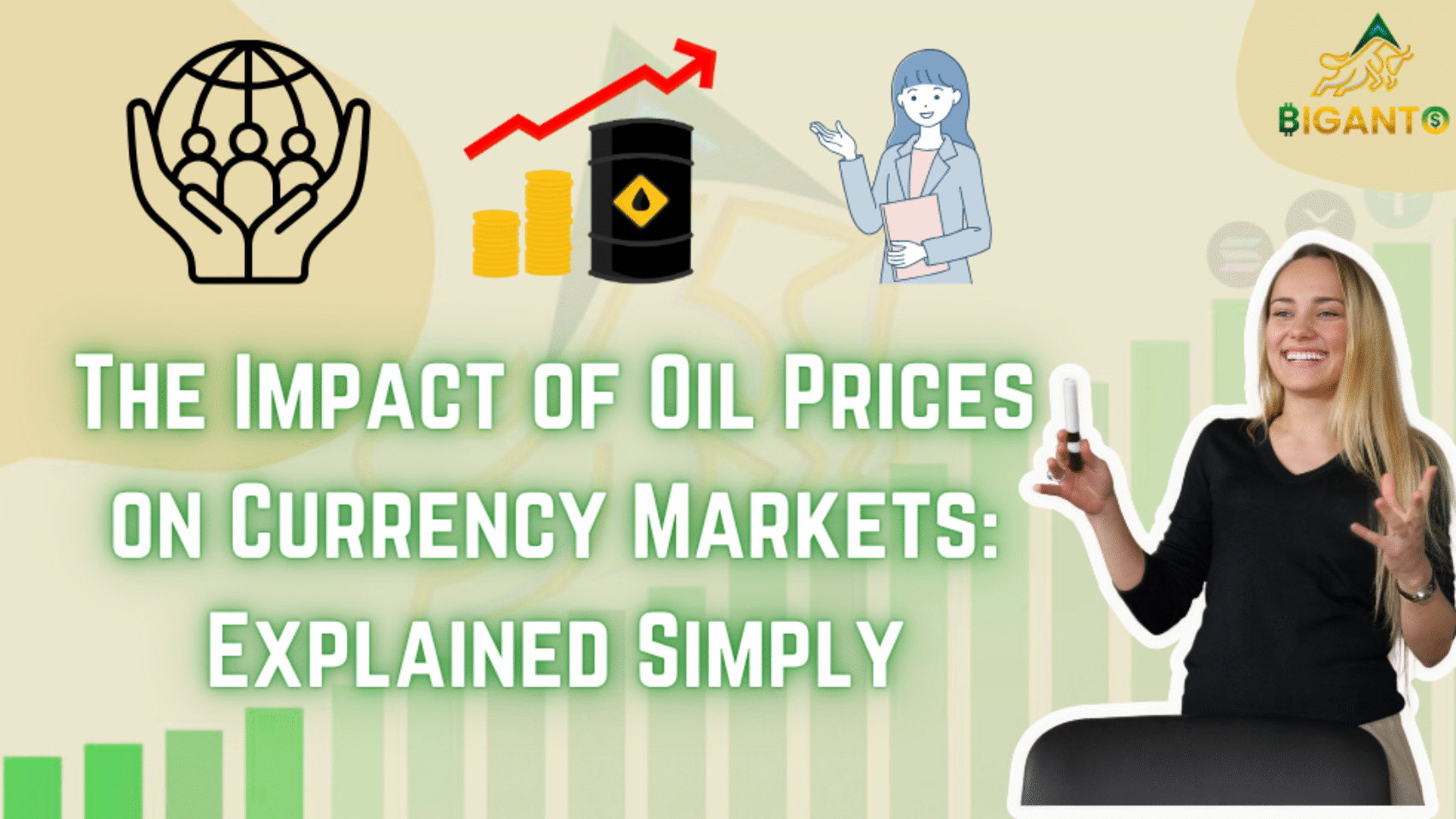Introduction
Crude oil and currencies are linked by a secret thread. The FX market frequently reacts sympathetically or antagonistically to changes in oil prices. Market psychology, trade balances, and resource distribution are only a few of the factors that contribute to this strong association.
Oil affects inflation and deflation globally in addition to supplying energy for economies. These correlations intensify further during moments of high trending (both rising and declining), leading to significant currency movements.
The Impact of Oil Prices on Currency Markets
Consider oil as the lifeblood of the world economy, driving industry, supplying energy for transportation, and even influencing the price of clothing, food, and everything else. Therefore, changes in oil prices affect more than simply the gas pump; they also have an impact on entire economies and, of course, their currencies.
Consider nations in two categories now
1. Countries that export oil, such as Canada, Russia, or Norway, do so in order to generate revenue.
2. Nations that purchase oil, such as Japan or India, in order to thrive.
When Oil Prices Rise: What Happens to Importers and Exporters
Exporters Experience Increased Wealth
Every day, nations like Saudi Arabia, Canada, and Russia export millions of barrels of oil. They make more money for the same amount of oil when the price of oil rises.
Consider this: You will earn significantly more money if you sell the same quantity of mangoes at a price that increases from ₹100 to ₹150 per dozen. That additional revenue translates into-
1. Oil firms will make more money.
2. Increased government revenue from taxes.
3. Additional funding for social programs, employment, and infrastructure.
International investors begin purchasing that nation’s currency (such as the Canadian dollar or the Russian ruble) as their confidence in its economic stability increases. As demand increases, so does the value of the currency.
As long as oil prices remain high, the exporter’s economy and currency are strengthened by this positive cycle.
Importers Experience Pressure
Now turn the narrative around. Rising oil costs put nations that import the majority of their oil, like Japan and India, in a difficult position.
For the same oil, they must pay more, and not less in US currency. This leads to several issues-
Because they are spending more than they are making, the trade deficit grows.
As more USD is purchased to pay for oil, the value of the local currency declines.
Inflation is caused by rising fuel and transportation expenses, which make everything more costly.
The government might need to increase interest rates or take on more debt.
When your household’s electricity bill unexpectedly triples, you reduce other expenditures, your stress levels increase, and your financial situation deteriorates. Likewise, the currency frequently depreciates as the market loses faith in the importing nation.
Channels of Transmission in Theory
Theoretically, fluctuations in oil prices can impact exchange rates through two main lines of transmission.
1. Trade Channel Terms
This emphasizes the price of crude oil as a major factor influencing the terms of trade, as promoted by Amano and van Norden (1998a, 1998b). It says:
Rising oil prices cause the trade balance to worsen, which in turn causes the local currency to depreciate in nations that import oil.
Rising oil prices result in improved trade balances and higher domestic currency values for oil-exporting nations.
However, overvaluation can harm non-oil sectors and eventually cause Dutch disease.
2. Effects of Wealth
This route, which was proposed by Golub (1983) and Krugman (1983), contends that rising oil prices cause wealth to shift from nations that import oil to those that export it. Real currency appreciation (for exporters) or depreciation (for importers) are the outcomes of this impact on current account balances and portfolio movements.
What Does This Study Tell Traders to Look for?
1. Watch for Volatility Linkages During Crises
The causal relations are stronger during the 2007–2008 financial crisis and the subsequent Eurozone sovereign debt crisis.
What this means for traders
A higher correlation between oil and currency pairs (such as USD/CAD, USD/JPY, and EUR/USD) is anticipated amid periods of economic strain or geopolitical unpredictability.
Trading suggestion
During times of crisis, use changes in the price of oil as a possible leading signal of fluctuations in the foreign exchange market.
2. Oil Isn’t Everything: Consider the Wider View
Oil is vital, yes.
1. Is the central bank raising or lowering interest rates?
2. Are prices increasing quickly?
3. Geopolitics (large elections, sanctions, or wars?)
Take Advantage of Correlation
There is a high correlation between oil prices and some currency pairs, such as USD/CAD.
If oil rises, CAD tends to gain, which results in a decline in USD/CAD.
If oil declines, CAD declines, and USD/CAD increases
This correlation can be used as a quick way to identify trade opportunities.
For instance, you can search for a short trade on USD/CAD if you observe oil breaking out to the upside.
Conclusion
Oil prices are important in global market. Whether a country exports or imports oil can drastically shape the direction of its currency, especially during times of economic stress or geopolitical tension. Trader don’t need to be an oil expert to trade forex well — but knowing how oil prices influence different currencies can help you avoid bad trades and spot good ones early.
Make oil part of your daily trading checklist, especially if you trade energy-linked currencies. It’s a small habit that can lead to smarter decisions and stronger trades.

